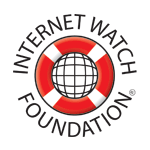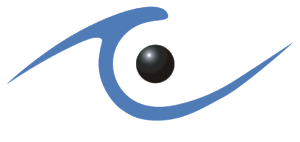Child Pornography in USA
Displaying child pornography or "kiddie porn" on the Internet is illegal in the United States. "Child pornography" is easier to define than more elusive concepts such as "obscenity," but several categories of content exist that may or may not constitute child pornography, depending upon the circumstances. By using this webpage in any way you agree that you accept our Terms and Conditions.
.
1. Introduction:
1. Introduction:
.
Producing, possessing or distributing images of minors (anyone under the age of 18) engaged in sexual conduct is illegal. Some states in the United States and many countries allow sexual conduct and marriage between adults and minors, but visual depictions of that conduct are prohibited in the United States by federal law. Similarly, sexual conduct between minors or by a minor is often tolerated but visual depictions of that conduct are also prohibited. Child Pornography laws in the United States exist to protect children and are strictly enforced - websites that display any content that might be considered child pornography should expect to be prosecuted.
.
2. The First Amendment:
2. The First Amendment:
.
Unlike pornographic images of adults, the First Amendment does not protect the possession or distribution of child pornography. Content that depicts children engaged in sexual conduct is "a category of material outside the protection of the First Amendment." New York v. Ferber, 458 U.S. 747 1982. The First Amendment does protect some material that could be considered child pornography, for example images in a medical textbook that show a child's genitalia. Although the possession or distribution of such images might be protected by the First Amendment when used in a pediatric context, the same images would probably not be protected if they were displayed on an adult website. Unless you have the resources of, for example, Calvin Klein, and can afford the legal battle, play it safe and do not display any questionable images of minors on your website.
.
3. Federal Statutes:
.
.
Title 18 of the United States Code governs child pornography. See Chapter 110, Sexual Exploitation and Other Abuse of Children. 18 U.S.C. § 2256 defines "Child pornography" as:
"any visual depiction, including any photograph, film, video, picture, or computer or computer-generated image or picture, whether made or produced by electronic, mechanical, or other means, of sexually explicit conduct, where - (A) the production of such visual depiction involves the use of a minor engaging in sexually explicit conduct; (B) such visual depiction is, or appears to be, of a minor engaging in sexually explicit conduct; (C) such visual depiction has been created, adapted, or modified to appear that an identifiable minor is engaging in sexually explicit conduct; or (D) such visual depiction is advertised, promoted, presented, described, or distributed in such a manner that conveys the impression that the material is or contains a visual depiction of a minor engaging in sexually explicit conduct . . ."
Section 2256 clearly defines images of minors engaged in sexually explicit conduct as "Child Pornography." It also, however, adds to that definition images that appear to depict a minor engaged in sexually explicit conduct, and images or advertisements that suggest images of minors engaged in sexually explicit conduct. Does that mean that adult websites that display sexually explicit images of legal-age models in pigtails with a lollipop, while surrounded by stuffed animals, can be prosecuted under Child Pornography laws? The short answer is yes. Future prosecutions will determine which direction the law is going. See our Website Prosecutions page for a few examples of current adult website legal issues.
If your adult website displays images that arguably appear to have minors engaged in sexually explicit conduct, make sure that you are prepared. You should have the proper legal forms that you need to comply with federal record keeping requirements, and you should have a lawyer who has already seen your adult website(s) and has some idea about what arguments he or she will make if you are prosecuted. You should also have plenty of money and a desire to make the headlines. Remember, if you are prosecuted for violating child pornography laws, a jury will decide whether the content on your adult website is child pornography. Without a doubt, some juries will see child pornography where there is none.
"any visual depiction, including any photograph, film, video, picture, or computer or computer-generated image or picture, whether made or produced by electronic, mechanical, or other means, of sexually explicit conduct, where - (A) the production of such visual depiction involves the use of a minor engaging in sexually explicit conduct; (B) such visual depiction is, or appears to be, of a minor engaging in sexually explicit conduct; (C) such visual depiction has been created, adapted, or modified to appear that an identifiable minor is engaging in sexually explicit conduct; or (D) such visual depiction is advertised, promoted, presented, described, or distributed in such a manner that conveys the impression that the material is or contains a visual depiction of a minor engaging in sexually explicit conduct . . ."
Section 2256 clearly defines images of minors engaged in sexually explicit conduct as "Child Pornography." It also, however, adds to that definition images that appear to depict a minor engaged in sexually explicit conduct, and images or advertisements that suggest images of minors engaged in sexually explicit conduct. Does that mean that adult websites that display sexually explicit images of legal-age models in pigtails with a lollipop, while surrounded by stuffed animals, can be prosecuted under Child Pornography laws? The short answer is yes. Future prosecutions will determine which direction the law is going. See our Website Prosecutions page for a few examples of current adult website legal issues.
If your adult website displays images that arguably appear to have minors engaged in sexually explicit conduct, make sure that you are prepared. You should have the proper legal forms that you need to comply with federal record keeping requirements, and you should have a lawyer who has already seen your adult website(s) and has some idea about what arguments he or she will make if you are prosecuted. You should also have plenty of money and a desire to make the headlines. Remember, if you are prosecuted for violating child pornography laws, a jury will decide whether the content on your adult website is child pornography. Without a doubt, some juries will see child pornography where there is none.
.
4. Sexually Explicit Conduct:
.
.
18 U.S.C. § 2252 prohibits the production, transportation, or knowing receipt or distribution of any visual depiction "of a minor engaging in sexually explicit conduct." For the purposes of Title 18, 18 U.S.C. § 2256 defines a "minor" as any person under the age of eighteen years, and "sexually explicit conduct" as actual or simulated:
"(A) sexual intercourse, including genital-genital, oral-genital, anal-genital, or oral-anal, whether between persons of the same or opposite sex; (B) bestiality; (C) masturbation; (D) sadistic or masochistic abuse; or (E) lascivious exhibition of the genitals or pubic area of any person"
"Sexual intercourse" and "bestiality" (sex with an animal) seem pretty clear - if your website displays images that a prosecutor believes involve minors engaged in sexual intercourse or bestiality, expect to be prosecuted. Which acts constitute "masturbation" or "sadistic or masochistic abuse" may be more difficult to define, because participants engaged in such activities tend to do so for a sexual purpose. Clearly a child could appear to be engaged in such activities without intending a sexual purpose. What a child intends by his or her actions is irrelevant, however, because Federal law prohibits "simulated" as well as actual acts. Many states also address this issue by prohibiting images of minors touching or displaying their bodies "for the purpose of sexual stimulation of the viewer." (See, for example, California Penal Code §§ 311.3-312.7).
Section (E) prohibits images of "lascivious exhibition of the genitals or pubic area." Courts that have interpreted this section have done so broadly - "as used in the child pornography statute, the ordinary meaning of the phrase "lascivious exhibition" means a depiction which displays or brings forth to view in order to attract notice to the genitals or pubic area of children, in order to excite lustfulness or sexual stimulation in the viewer." See United States v Knox (1994). You may risk prosecution if your website displays images of minors depicted in a way that excites viewers.
"(A) sexual intercourse, including genital-genital, oral-genital, anal-genital, or oral-anal, whether between persons of the same or opposite sex; (B) bestiality; (C) masturbation; (D) sadistic or masochistic abuse; or (E) lascivious exhibition of the genitals or pubic area of any person"
"Sexual intercourse" and "bestiality" (sex with an animal) seem pretty clear - if your website displays images that a prosecutor believes involve minors engaged in sexual intercourse or bestiality, expect to be prosecuted. Which acts constitute "masturbation" or "sadistic or masochistic abuse" may be more difficult to define, because participants engaged in such activities tend to do so for a sexual purpose. Clearly a child could appear to be engaged in such activities without intending a sexual purpose. What a child intends by his or her actions is irrelevant, however, because Federal law prohibits "simulated" as well as actual acts. Many states also address this issue by prohibiting images of minors touching or displaying their bodies "for the purpose of sexual stimulation of the viewer." (See, for example, California Penal Code §§ 311.3-312.7).
Section (E) prohibits images of "lascivious exhibition of the genitals or pubic area." Courts that have interpreted this section have done so broadly - "as used in the child pornography statute, the ordinary meaning of the phrase "lascivious exhibition" means a depiction which displays or brings forth to view in order to attract notice to the genitals or pubic area of children, in order to excite lustfulness or sexual stimulation in the viewer." See United States v Knox (1994). You may risk prosecution if your website displays images of minors depicted in a way that excites viewers.
.
5. United States v Knox:
.
5. United States v Knox:
.
In Knox, a man who had previously been convicted of receiving child pornography through the mail ordered video tapes (by mail) of girls between the ages of ten and seventeen who, in the Court's words, "were dancing or gyrating in a fashion not natural for their age." The girls wore bikini bathing suits, leotards, or underwear - none of the girls in the videos was nude. The videos were set to music, and it appeared that someone off-camera was directing the girls. The photographer videotaped the girls dancing, and zoomed in on each girl's pubic area for an extended period of time. Knox was prosecuted under United States Child Pornography laws.
Legal counsel for Knox argued that "lascivious exhibition of the genitals or pubic area" meant that the girls had to be nude - wearing clothing meant that that genitals and pubic area were clearly not exhibited. The Court disagreed and held that there was no nudity requirement in the statute: "the statutory term "lascivious exhibition of the genitals or pubic area," as used in 18 U.S.C. ? 2256(2)(E), does not contain any requirement that the child subject's genitals or pubic area be fully or partially exposed or discernible through his or her opaque clothing."
Legal counsel for Knox argued that "lascivious exhibition of the genitals or pubic area" meant that the girls had to be nude - wearing clothing meant that that genitals and pubic area were clearly not exhibited. The Court disagreed and held that there was no nudity requirement in the statute: "the statutory term "lascivious exhibition of the genitals or pubic area," as used in 18 U.S.C. ? 2256(2)(E), does not contain any requirement that the child subject's genitals or pubic area be fully or partially exposed or discernible through his or her opaque clothing."
.
6. Unanswered Questions:
6. Unanswered Questions:
.
The Courts will likely continue to define what is prohibited under the child pornography laws. For example, if a website displays legal images of children, perhaps scanned from magazines and other legal sources, in a way that a prosecutor believes could excite some viewers, can that website be prosecuted under the child pornography laws? In many states and countries the age of consent is younger than 18. Can the USA prosecute a webmaster in another country who is displaying images of a 16 year old nude model, even if the images are not illegal in the webmaster's home country? The USA invades other countries to enforce its drug laws, so it's possible that webmasters in other countries might find themselves hauled to the USA to face criminal charges if they violate USA child pornography laws.
The Courts will likely continue to define what is prohibited under the child pornography laws. For example, if a website displays legal images of children, perhaps scanned from magazines and other legal sources, in a way that a prosecutor believes could excite some viewers, can that website be prosecuted under the child pornography laws? In many states and countries the age of consent is younger than 18. Can the USA prosecute a webmaster in another country who is displaying images of a 16 year old nude model, even if the images are not illegal in the webmaster's home country? The USA invades other countries to enforce its drug laws, so it's possible that webmasters in other countries might find themselves hauled to the USA to face criminal charges if they violate USA child pornography laws.
.
7. Conclusion:
.
If you want to be safe, do not display any images of minors on your adult website and do not advertise or suggest that your models are minors. If your website displays any arguably sexual images of minors, you may risk prosecution if it appears that your site exists for the sexual stimulation of viewers. If you display any questionable images of minors on your website, make sure you have a good lawyer. If you have any questionable images on your site, but you know that the model depicted is of legal age, make sure that you have the necessary legal records you will need to produce if you are prosecuted.
If you want to be safe, do not display any images of minors on your adult website and do not advertise or suggest that your models are minors. If your website displays any arguably sexual images of minors, you may risk prosecution if it appears that your site exists for the sexual stimulation of viewers. If you display any questionable images of minors on your website, make sure you have a good lawyer. If you have any questionable images on your site, but you know that the model depicted is of legal age, make sure that you have the necessary legal records you will need to produce if you are prosecuted.
.
8. Another websites against Child Pornography:
- Child Abuse Website Links A list of online websites and organizations dedicated to stopping child abuse and child pornography courtesy of Internet Quality Check.
- Child Pornography on the Internet By M. George Waters IV and Jack Harrell. A decent overview of child pornography and child pornography laws. Also one of the best arguments against the use of frames that you will ever see.
- Adult Sites Against Child Pornography (ASACP) An organization dedicated to raising awareness about the subject of child pornography.
- Child Pornography Issues Naked pictures of the kid getting a bath in the sink or child pornography? Food for thought from Salon.com












































